

 A lot happens in April. Some things that are supposed to happen, like the tasting of young Bordeaux wines from vintage 2015. Other things that shouldn’t happen but do happen nevertheless, like devastating frost nights. The entire northern France, as well as other countries, have been hit and the southern regions have not been spared either.
A lot happens in April. Some things that are supposed to happen, like the tasting of young Bordeaux wines from vintage 2015. Other things that shouldn’t happen but do happen nevertheless, like devastating frost nights. The entire northern France, as well as other countries, have been hit and the southern regions have not been spared either.
During the week that the Bordeaux chateaux showed their young primeur wines, it was speculated that the role of journalists in Bordeaux will now decrease because Robert Parker is no longer tasting the primeurs. He was the only one, according to many, that could affect the markets, the chateaux pricing and consumer choice all over the world with his points. How the post Parker period will look remains to be seen.
Also Champagne now has its own primeur tasting, of sorts, in April. It is the small producers (not the houses), that invite trade and press to tast their vin clair, that is the still wine before it is bottled to become bubbly a little later in spring or summer. Today it can be really nice to try these still wines. In the past, the acidity was higher and you had to be an experienced vin clair taster to imagine how the champagne from this still wine would eventually turn out. 2015 was a good vintage with ripe grapes and some of the still wines from 2015 you can actually enjoy, much like a good Burgundy.
In April it was also time for the Languedoc to present its wines. They showed a few primerus, i.e. the 2015 vintage, but more importantly and more interesting was to taste the wines that are or have recently come on to the market. Lots of goodies. BKWine Magazine was of course on site, one of the few Scandinavian media present, and we will certainly have reason to return to those wines in a future Brief.
I can also mention that we have made a small restructuring of the Brief.
First you will find brief news from the wine world.
Then you have information on current wine tours.
And lastly you have the longer feature articles that we have published during the past month with lots and lots of reading for you.
Hope you like it.
Britt & Per
PS: Recommend to your friends to read the Brief!
– – – – –
What’s on at BKWine Tours
- Bordeaux, April 20-24, 2016
- Champagne, September 14-18
- Bordeaux, September 28 – October 2
- Douro Valley, October 12-16
- Chile and Argentina in South America, January 28 – February 12, 2017
- South Africa, February 24 – March 7, 2017 (full program coming soon)
For more information please contact us on email or on phone (we’re on French time), or go to our wine travel site on www.bkwinetours.com!
We also make custom designed wine tours – on-demand tours for you and a group of friends, for your company (maybe to scout new winegrowers?), for a special event… We can combine winery visits and wine touring with other activities: gastronomic workshops, visit to an oyster farm, truffles hunting, cheese making, and more. More info on the custom designed and bespoke BKWine wine tours and travel here!
Do you want the latest news and updates on our wine travel activity? Subscribe here! (Second alternative BKWineTours.com)
From the World of Wine
News
Brunello celebrates its 50th birthday
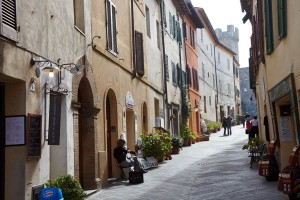 Brunello di Montalcino in Tuscany has celebrated its fiftieth birthday as a DOC. It was in 1966 that the wine, as one of the first in Italy, received its denomination of origin. Brunello currently has great success in the export market. 70% of the production is exported. The US is the largest market, Canada and Asia, including China, is growing.
Brunello di Montalcino in Tuscany has celebrated its fiftieth birthday as a DOC. It was in 1966 that the wine, as one of the first in Italy, received its denomination of origin. Brunello currently has great success in the export market. 70% of the production is exported. The US is the largest market, Canada and Asia, including China, is growing.
Brunello is one of the big stars in Italy today. In 1966 the region was small, no more than 80 hectares. Since then it has grown to today’s 2000 hectares. Brunello is very beautifully situated in Tuscany, not far from Siena. The grape is 100% Sangiovese. Since 2008, when some producers blended other grape varieties in their Brunello and caused a minor scandal, everyone agrees that only sangiovese can be used. Read more on meininger.de.
Congratulations Arvid Rosengren, Swedish world champion sommelier
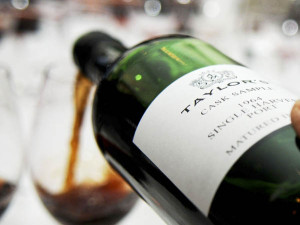 Sweden has once again a world champion sommelier. The last time it was Andreas Larsson, who won in 2007. Now it was Arvid Rosengren who triumphed in Mendoza, Argentina, on 19th of April. Another Swede, Robert Andersson, was a semi-finalist.
Sweden has once again a world champion sommelier. The last time it was Andreas Larsson, who won in 2007. Now it was Arvid Rosengren who triumphed in Mendoza, Argentina, on 19th of April. Another Swede, Robert Andersson, was a semi-finalist.
The sommelier competition is organized every three years by the Association de la Sommellerie Internationale. It is an extremely hard competition that the participants often prepare for during several years. And hence, having this title, the world’s best sommelier, is very prestigious. Read more on sommellerie-internationale.com
Rickety Bridge Foundation Stone White, South African favourite | Britt’s wine of the month
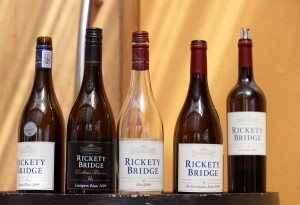 One of our favourites in South Africa is Rickety Bridge in Franschhoek, a winery that we always have on the itinerary for our SA wine tours. Their Foundation Stone White is made primarily from Chenin Blanc which gives it an interesting complexity, body, ripe fruit with a touch of honey (and it has just managed to get in to the monopoly in Sweden!). A bit of grenache blanc, roussanne, and viognier adds some flowery and spicy aromas. Very nice with just a little hint of oak in the background.
One of our favourites in South Africa is Rickety Bridge in Franschhoek, a winery that we always have on the itinerary for our SA wine tours. Their Foundation Stone White is made primarily from Chenin Blanc which gives it an interesting complexity, body, ripe fruit with a touch of honey (and it has just managed to get in to the monopoly in Sweden!). A bit of grenache blanc, roussanne, and viognier adds some flowery and spicy aromas. Very nice with just a little hint of oak in the background.
The winemaker, Wynand Grobler, explains that he harvests the grapes for this quite early to keep the acidity high. He ferments in with whole bunches in big oak casks (foudres) using natural yeast. He likes blending chenin blanc with other grapes, and he is very fond of the Mediterranean grapes.
You will have the opportunity to taste plenty of delicious South African wines if you join us on next year’s wine tour to South Africa. And meet Wynand in person!
New wine hierarchy in Languedoc
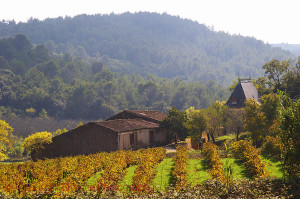 The Languedoc growers have long been planning a structuring of the different appellations in a hierarchy. Earlier they planned to have a top appellation category called “grand cru”. However, they were rapped on the knuckles by the INAO. Grand cru, they may not use. When I was recently in the Languedoc for their annual primeur tasting they presented the new plan, a division into three levels:
The Languedoc growers have long been planning a structuring of the different appellations in a hierarchy. Earlier they planned to have a top appellation category called “grand cru”. However, they were rapped on the knuckles by the INAO. Grand cru, they may not use. When I was recently in the Languedoc for their annual primeur tasting they presented the new plan, a division into three levels:
- A regional appellation, ie Languedoc, as a base level
- A “grand vin” category, for the sub-districts within the Languedoc, for example Corbières and Minervois.
- A top category called “cru” (without the “grand”!) for the sub-areas of the sub-regions, e.g. La Livinière within Minervois.
They also have plans for a whole plethora of new appellations, 36 new AOPs to come.
We are very critical of this fragmentation. It is infinitely more important to find good producer rather than if the vineyard happens to be a “grand vin” or “cru”. That is totally evident to anyone who tasted all the many hundreds of wines on show. The whole system seems designed to confuse consumers, particularly as it will not be mandatory to write in big letters “Languedoc” on all labels. Too bad when you think of how many fantastic wines are made here.
Hail in Burgundy, again
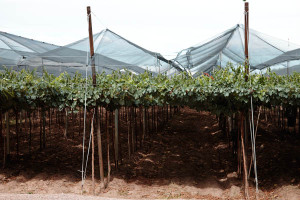 Hailstorms have again destroyed a part of the future harvest 2016 for growers in Beaujolais and Mâconnais. It was on the 13th and 14th of April that some villages, including Solutré-Pouilly in Macon and Juliénas and Saint-Amour in Beaujolais, saw their still very tiny buds getting injured by violent and large hailstones. Overall, between 2000 and 2500 hectares have been affected but how big the impact will be on the harvest is still unclear.
Hailstorms have again destroyed a part of the future harvest 2016 for growers in Beaujolais and Mâconnais. It was on the 13th and 14th of April that some villages, including Solutré-Pouilly in Macon and Juliénas and Saint-Amour in Beaujolais, saw their still very tiny buds getting injured by violent and large hailstones. Overall, between 2000 and 2500 hectares have been affected but how big the impact will be on the harvest is still unclear.
The hailstorm in Mâcon was unusually heavy and prolonged. Hailstorms tend to be short and intense; this lasted for 15-20 minutes. If a bud at this stage is completely destroyed, there is the chance that a new bud, sitting behind the main bud (“contre-bourgeon”), steps in to do the job. You risk getting a lower yield with this second bud though. Read more on bourgogneaujourdhui.com
But that is not all. Frost also struck with night temperatures well below zero. Serious damages to young buds in Burgundy, Loire, Champagne, Germany, Austria… Poor winegrowers! More on this below!
Wine in Italian schools?
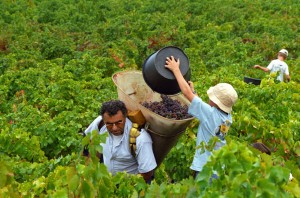 Is that appropriate? No, it’s not about drinking wine, it is more about learning about wine. A senator in the Italian parliament has proposed a law that makes it mandatory to teach schoolchildren of the history and the civilisation of wine in Italy. He believes that the people of the world’s largest wine country should have at least some knowledge of this, for the country, important product. And the best place to start is in the schools.
Is that appropriate? No, it’s not about drinking wine, it is more about learning about wine. A senator in the Italian parliament has proposed a law that makes it mandatory to teach schoolchildren of the history and the civilisation of wine in Italy. He believes that the people of the world’s largest wine country should have at least some knowledge of this, for the country, important product. And the best place to start is in the schools.
In addition, the senator believes, it would be a way to teach children to drink wine properly. Even in Italy, the traditional family meals today have a reduced importance, which means that the children do not learn to drink wine in a civilized manner. Read more on vitisphere.com
Frost in northern France
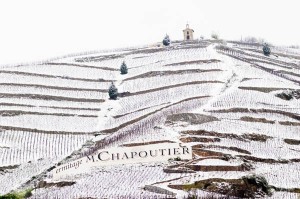 It has been a cold spring in northern France. For growers in Chablis and the Côte d’Or this turned into something really bad during the night between April 26 and 27. It was a frosty night that affected virtually all vineyards in the two regions. How big the damage will be is still uncertain, but some vineyards had 80% of the buds destroyed.
It has been a cold spring in northern France. For growers in Chablis and the Côte d’Or this turned into something really bad during the night between April 26 and 27. It was a frosty night that affected virtually all vineyards in the two regions. How big the damage will be is still uncertain, but some vineyards had 80% of the buds destroyed.
In Chablis the frost lasted three nights with temperatures down to minus 3.5 degrees C. Protection with heaters and water sprinklers has helped some vineyards but not completely. On top of everything, in some places both the main bud and the “back-up bud” (le contre-bourgeon) had already burst. If both freeze to death it will be difficult to get any harvest.
Also the northern Loire Valley has been hit very hard by frost these last nights in April. Read more on vitisphere.com. We have also heard reports on frost damages in Germany and in Austria.
The official rating for Rioja 2015 is “Very Good”,
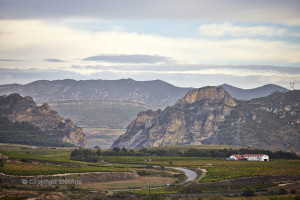 Last year’s harvest was the earliest anyone had ever experienced in Rioja. And the fastest. The harvest in Rioja usually takes two months. In 2015 it took the four weeks. Moreover, it was a very good harvest, both for quality and quantity. Riojas control board, Consejo Regulador DOCa Rioja, has recently given the vintage 2015 the official rating of “Very Good”. The vintage, which produced very ripe grapes, is considered to be fresh and elegant with good aging potential. Total volume in 2015 was 319 million litres.
Last year’s harvest was the earliest anyone had ever experienced in Rioja. And the fastest. The harvest in Rioja usually takes two months. In 2015 it took the four weeks. Moreover, it was a very good harvest, both for quality and quantity. Riojas control board, Consejo Regulador DOCa Rioja, has recently given the vintage 2015 the official rating of “Very Good”. The vintage, which produced very ripe grapes, is considered to be fresh and elegant with good aging potential. Total volume in 2015 was 319 million litres.
To establish the rating the Regulatory Council collects 4454 wine samples directly from the wineries fermenters. The samples are analysed and tested. In total the council approved 298.48 litres of wine divided into 16.62 million litres of white, 13.62 million litres of rosé and 268.24 million litres of red. This means that these wines are allowed to be sold with the appellation DOCa Rioja. Obviously there were some who did not make it. Read more on riojawine.com
Discovery in the OIV library
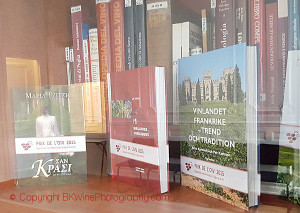 The other day I was at the OIV, the International Organisation for Vine and Wine, to attend their press conference on the status of the wine economy in the world. It was an interesting presentation, as always, and always interesting to see what people conclude from it. My headline was essentially “2015 was a stable year, not much surprise”. I have seen two other articles, one which said something like “the wine world emits a sigh of relief, wine consumption in china is up again” and another one with “France is still the biggest wine exporter”. How different one can see things.
The other day I was at the OIV, the International Organisation for Vine and Wine, to attend their press conference on the status of the wine economy in the world. It was an interesting presentation, as always, and always interesting to see what people conclude from it. My headline was essentially “2015 was a stable year, not much surprise”. I have seen two other articles, one which said something like “the wine world emits a sigh of relief, wine consumption in china is up again” and another one with “France is still the biggest wine exporter”. How different one can see things.
But maybe the most exciting thing (OK, I exaggerate, a little) was that I happened to glance into the OIV library: Discovery in the OIV library.
Wine Travel
Champagne, the real Champagne wine
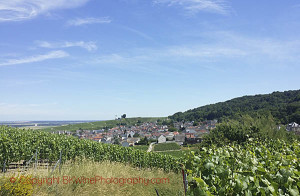 Unfortunately most champagne is gulped down at festive occasions without the drinker giving much of a thought to the actual taste. That is a big mistake. Champagne is a top quality wine that is perfect for celebrations, yes, but that is also an excellent drink with food. Our wine tour to champagne will show you some of the top producers in this northerly region. Yes, we will visit one of the big houses. But what makes us excited about champagne, and we think that it will make you excited too, are the small producers, the independent growers. There is a reason why the world’s top restaurants and sommeliers go searching for the independent growers’ champagnes today. You will understand why. As good as, or even better, champagnes. At half the prices. Champagnes for the wine lovers. Why not stock up for Christmas?
Unfortunately most champagne is gulped down at festive occasions without the drinker giving much of a thought to the actual taste. That is a big mistake. Champagne is a top quality wine that is perfect for celebrations, yes, but that is also an excellent drink with food. Our wine tour to champagne will show you some of the top producers in this northerly region. Yes, we will visit one of the big houses. But what makes us excited about champagne, and we think that it will make you excited too, are the small producers, the independent growers. There is a reason why the world’s top restaurants and sommeliers go searching for the independent growers’ champagnes today. You will understand why. As good as, or even better, champagnes. At half the prices. Champagnes for the wine lovers. Why not stock up for Christmas?
The classic and ultimate wine tour: Bordeaux
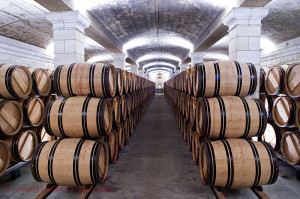 Bordeaux is a wine region of many contrasts. You have the hugely famous wine producers with magnificent almost Versailles-like chateaux, with wines that you can rarely afford. But it is also a wine region with very rural parts, with small family wineries (still called chateau, of course). In fact, it is a wine region where you find a lot of new dynamisms today. What we want to show you of Bordeaux is an insight into the “real” Bordeaux, not only the gilded salons. We will take you to the producers who make outstanding wines but that perhaps were not on the right listing 150 years ago (wink, wink, 1855 Bordeaux Classification). Yes, there will be a bit of that too, don’t worry. But frankly, just glitz, glamour and bling get a bit boring. Are you here to taste the wines and experience one of the world’s leading wine region or just to have a list of names to tick off and to tell your friends about at home? Come and see the real Bordeaux on this wine tour. There will be plenty of outstanding wines and some top notch gastronomy to enjoy too. As guests at the châteaux.
Bordeaux is a wine region of many contrasts. You have the hugely famous wine producers with magnificent almost Versailles-like chateaux, with wines that you can rarely afford. But it is also a wine region with very rural parts, with small family wineries (still called chateau, of course). In fact, it is a wine region where you find a lot of new dynamisms today. What we want to show you of Bordeaux is an insight into the “real” Bordeaux, not only the gilded salons. We will take you to the producers who make outstanding wines but that perhaps were not on the right listing 150 years ago (wink, wink, 1855 Bordeaux Classification). Yes, there will be a bit of that too, don’t worry. But frankly, just glitz, glamour and bling get a bit boring. Are you here to taste the wines and experience one of the world’s leading wine region or just to have a list of names to tick off and to tell your friends about at home? Come and see the real Bordeaux on this wine tour. There will be plenty of outstanding wines and some top notch gastronomy to enjoy too. As guests at the châteaux.
Is the Douro Valley the world’s most spectacular wine region landscape?
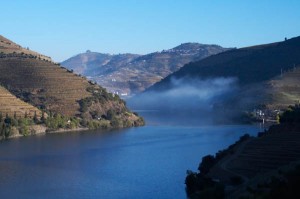 It is a good question! Few wine regions can compete with the Douro Valley in spectacular beauty and dramatic landscapes. Terraced vineyards that dive into the river. Serpentine roads that wind up steep vineyard-covered hills. But above all, fantastic wines. Today they make some of Portugal’s best “table wines” here. But also, of course, the famous port wine. The latest trend is old tawny. Wonderful! Better than vintage? Judge for yourself. On the itinerary we also have one of the best restaurants in all of Portugal. Wonderful too! Portugal and the Douro Valley is certainly a very different wine country and wine region. Join us on the wine tour to the Douro Valley.
It is a good question! Few wine regions can compete with the Douro Valley in spectacular beauty and dramatic landscapes. Terraced vineyards that dive into the river. Serpentine roads that wind up steep vineyard-covered hills. But above all, fantastic wines. Today they make some of Portugal’s best “table wines” here. But also, of course, the famous port wine. The latest trend is old tawny. Wonderful! Better than vintage? Judge for yourself. On the itinerary we also have one of the best restaurants in all of Portugal. Wonderful too! Portugal and the Douro Valley is certainly a very different wine country and wine region. Join us on the wine tour to the Douro Valley.
The new program for the Chile & Argentina tour now up; South Africa soon to come
We have finished the final touches on the program for next year’s wine tour to South America, with Chile and Argentina. As we tend to do, we have reviewed it and renovated it from top to bottom to make it even better. The last tour we did was a very good illustration of that these countries have left behind them the era of over-oaked and all too powerful body-building wines. At the 20 something vineyards we visited the wines were consistently in top class. And the 2017 tour will be even better. And just the crossing over the Andes would be worth a trip in itself. But you get that included in the wine tour package…
The wine tour program for South Africa is almost finalised but not quite yet. Wait a week or so. The dates are set so you can already pencil it in in your agenda. It will also contain some new elements. There is so much happening in the wine countries in south Africa today so it is important to review and revise the program each year. This time we will add on the program the wine regions at the southern tip of Africa, with cooler climate. Perhaps the most trendy thing there is in SA right now. And where they have plenty of shark and whales… But we will of course keep the classic South African wine regions too.
Feature Articles
Status of world wine: vineyard surface, wine production & consumption, import-export | Per on Forbes
 The latest numbers of the world wine industry have just been announced by the OIV. Here are the key points for the development in 2015, compared to 2014:
The latest numbers of the world wine industry have just been announced by the OIV. Here are the key points for the development in 2015, compared to 2014:
- The world’s vineyard area is almost unchanged, at 7.5 million hectares (18.5 million acres).
- The global wine production is marginally up, to 274 million hectolitres (up 2.2%).
- The consumption of wine world-wide is stable at 240 million hectolitres.
- The wine trade: the world of wine is becoming increasingly international with 43% of all wine is consumed in another country than where it is produced.
In other words, 2015 is a year of stability and consolidation.
Read more on Per’s article on BKWine Magazine, originally published on Forbes: Status of world wine: vineyard surface, wine production & consumption, import-export | Per on Forbes.
You can also watch the video of the whole press conference at the OIV where the global wine statistics were presented.
Saint Helena, Napa Valley’s Holy Grail
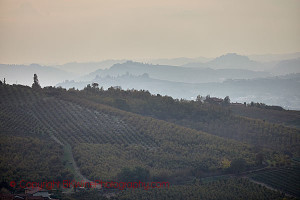 ”No other wine region on the planet draws as much attention or visitors as Napa Valley. It is visited by some five million people every year, making it the second most visited tourist destination in California (Disneyland is number 1). Perfect for a day or weekend trip from San Francisco, Napa Valley awards one with beautiful scenery, exceptional wineries and world-renowned wines.”
”No other wine region on the planet draws as much attention or visitors as Napa Valley. It is visited by some five million people every year, making it the second most visited tourist destination in California (Disneyland is number 1). Perfect for a day or weekend trip from San Francisco, Napa Valley awards one with beautiful scenery, exceptional wineries and world-renowned wines.”
Read the rest of this guest article, written by Igor Sill, on BKWine Magazine: Saint Helena, Napa Valley’s Holy Grail.
Wines from north-west USA: Oregon
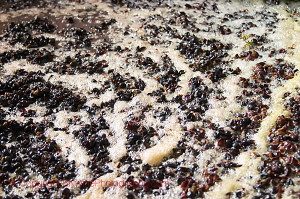 “If anyone 30 years ago would have said that in Oregon makes just as good wines from pinot noir as they do in Burgundy that would have been regarded as very ignorant or insane. Today, few people turn up their noses when one says that there is a good selection of really nice pinot noir wines from Oregon.”
“If anyone 30 years ago would have said that in Oregon makes just as good wines from pinot noir as they do in Burgundy that would have been regarded as very ignorant or insane. Today, few people turn up their noses when one says that there is a good selection of really nice pinot noir wines from Oregon.”
Carl-Erik Kanne has immersed himself in Oregon wines. We have a series of three articles on BKWine Magazine. The first two are available here:
Campania what? An exciting wine region on the Amalfi Coast!
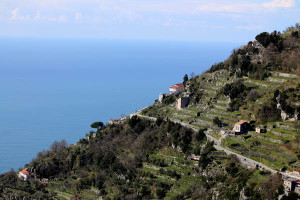 Campania, what’s that? That’s a question that is not unusual when I mention one of Italy’s most interesting – and most underrated – wine regions. I can agree that it is not so easy to keep track of all the Italian regions, wines and grapes. Italy’s big names, Tuscany, Piedmont, Sicily and Veneto take up so much space that it is difficult for other Italian regions to get some time in the limelight. But if there is anyone who deserves a moment in the spotlight, it is Campania.
Campania, what’s that? That’s a question that is not unusual when I mention one of Italy’s most interesting – and most underrated – wine regions. I can agree that it is not so easy to keep track of all the Italian regions, wines and grapes. Italy’s big names, Tuscany, Piedmont, Sicily and Veneto take up so much space that it is difficult for other Italian regions to get some time in the limelight. But if there is anyone who deserves a moment in the spotlight, it is Campania.
Read the rest of Åsa’s article on BKWine Magazine: Campania what? An exciting wine region on the Amalfi Coast!
La Chablisienne, 280 winegrowers and one winemaker in Chablis!
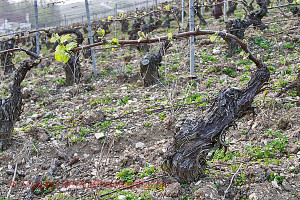 Hervé Tucki is in town. He is the traveling world ambassador for one of the world’s best wine cooperatives, La Chablisienne in, of course, Chablis, France. The place is well chosen by the importer, The WineAgency. We are at les chambres séparées at the Wedholms Fisk restaurant in Stockholm. The guest list is a who’s who of Swedish wine journalists, in place to meet Hervé and hear him enthusiastically present and offer for tasting 11 different Chablis wines.
Hervé Tucki is in town. He is the traveling world ambassador for one of the world’s best wine cooperatives, La Chablisienne in, of course, Chablis, France. The place is well chosen by the importer, The WineAgency. We are at les chambres séparées at the Wedholms Fisk restaurant in Stockholm. The guest list is a who’s who of Swedish wine journalists, in place to meet Hervé and hear him enthusiastically present and offer for tasting 11 different Chablis wines.
Read Wilhelm’s full article on BKWine Magazine: La Chablisienne, 280 winegrowers and one winemaker in Chablis!
Yalumba, Australian wines from “all the land around”
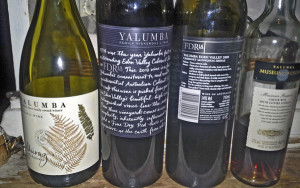 Yalumba is Australia’s oldest family-owned winery with its 165 years. The company is managed today by the fifth generation Smith, Robert Hill-Smith. The name means “all the land around” in Aboriginal language. Yalumba is also one of the twelve members of Australia’s First Families of Wine (AFFW), an association of family-owned wineries. The background to AFFW is that family owned winery do not have the same pressure to deliver quarterly results to the stock market and thus can live their passion for wine with a more long-term view.
Yalumba is Australia’s oldest family-owned winery with its 165 years. The company is managed today by the fifth generation Smith, Robert Hill-Smith. The name means “all the land around” in Aboriginal language. Yalumba is also one of the twelve members of Australia’s First Families of Wine (AFFW), an association of family-owned wineries. The background to AFFW is that family owned winery do not have the same pressure to deliver quarterly results to the stock market and thus can live their passion for wine with a more long-term view.
Read the rest of Mikael Karlin’s article on BKWine Magazine: Yalumba, Australian wines from “all the land around”.
Learn how to identify a grape variety by the leaf and grape bunch
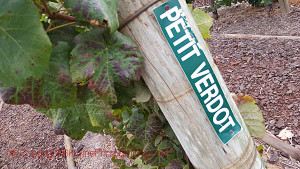 “These days the most reliable way to identify a grape variety is to do a DNA test (made famous in the wine world by the Swiss botanist José Vouillamoz). But few people carry around a DNA test kit in the vineyards. The most important clue to identify the grape variety is otherwise the leaf. It should be a full-grown leaf to properly show the characteristics. There are several things to look for.”
“These days the most reliable way to identify a grape variety is to do a DNA test (made famous in the wine world by the Swiss botanist José Vouillamoz). But few people carry around a DNA test kit in the vineyards. The most important clue to identify the grape variety is otherwise the leaf. It should be a full-grown leaf to properly show the characteristics. There are several things to look for.”
Read the rest of Per’s article on grape varieties on BKWine Magazine: Learn how to identify a grape variety by the leaf and grape bunch.
Don’t be an egoist! Share with your friends and other wine enthusiasts! Forward the Brief to your friends! Suggest that they sign up for a free subscription !
© Copyright BKWine







